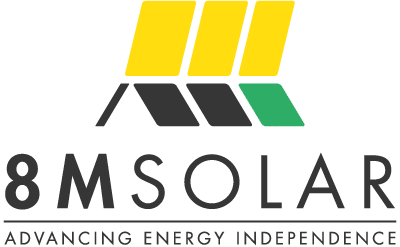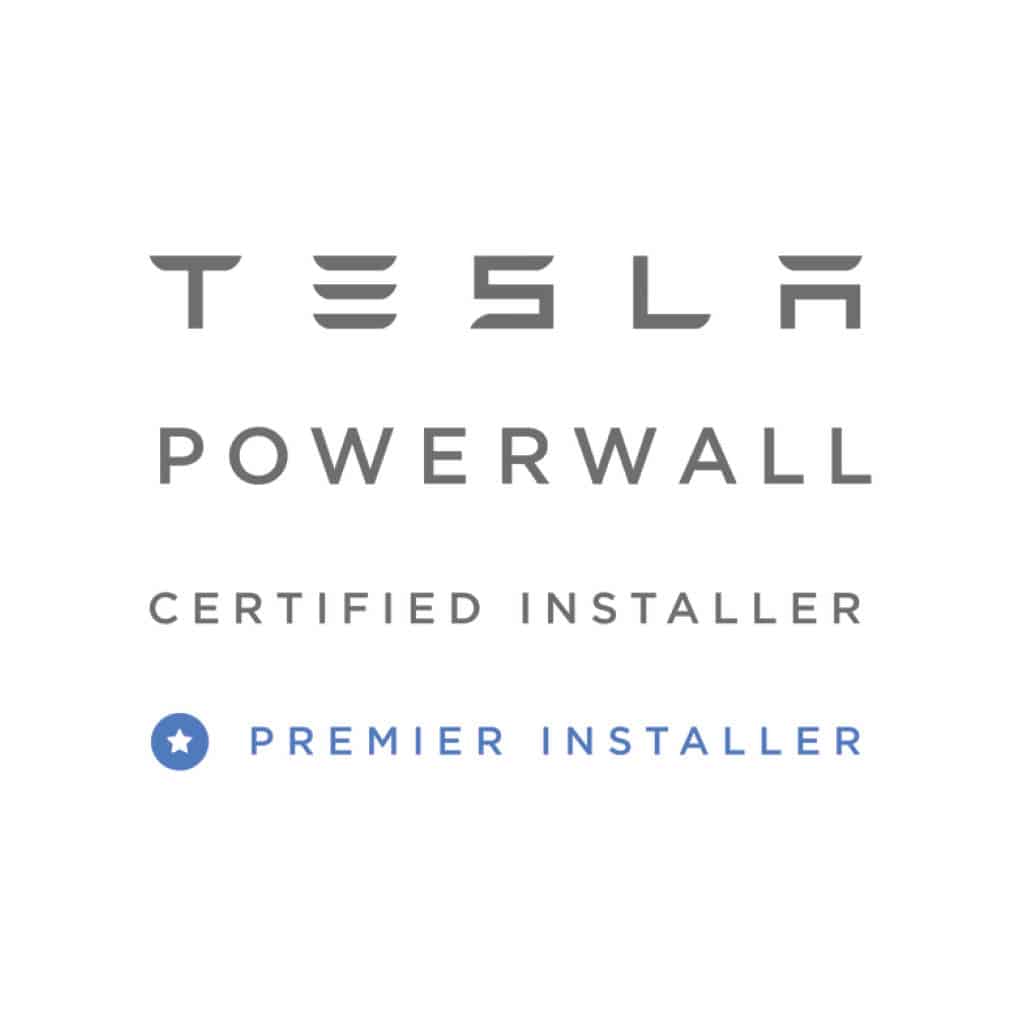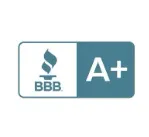The Tesla Powerwall, paired with a solar roof or panel, offers an energy-reliant solution for homes, but installation can be costly. Specifically, the 13.5kWh Tesla Powerwall costs around $10,500, and adding a solar panel can range from $15,000 to $25,000, totaling potentially over $25,500. For homes with above-average electricity consumption, one 13.5kWh Powerwall might be inadequate. Energy Sage notes that a single 13.5kWh Powerwall can power basic home electronics for 24 hours. However, greater power needs require additional Powerwalls and solar panels, raising the cost further.
The Powerwall might not be for everyone, so 8MSolar has compiled a list of potential alternatives as you research and plan out your solar project. You can learn more from our Tesla Powerwall review.
Enphase
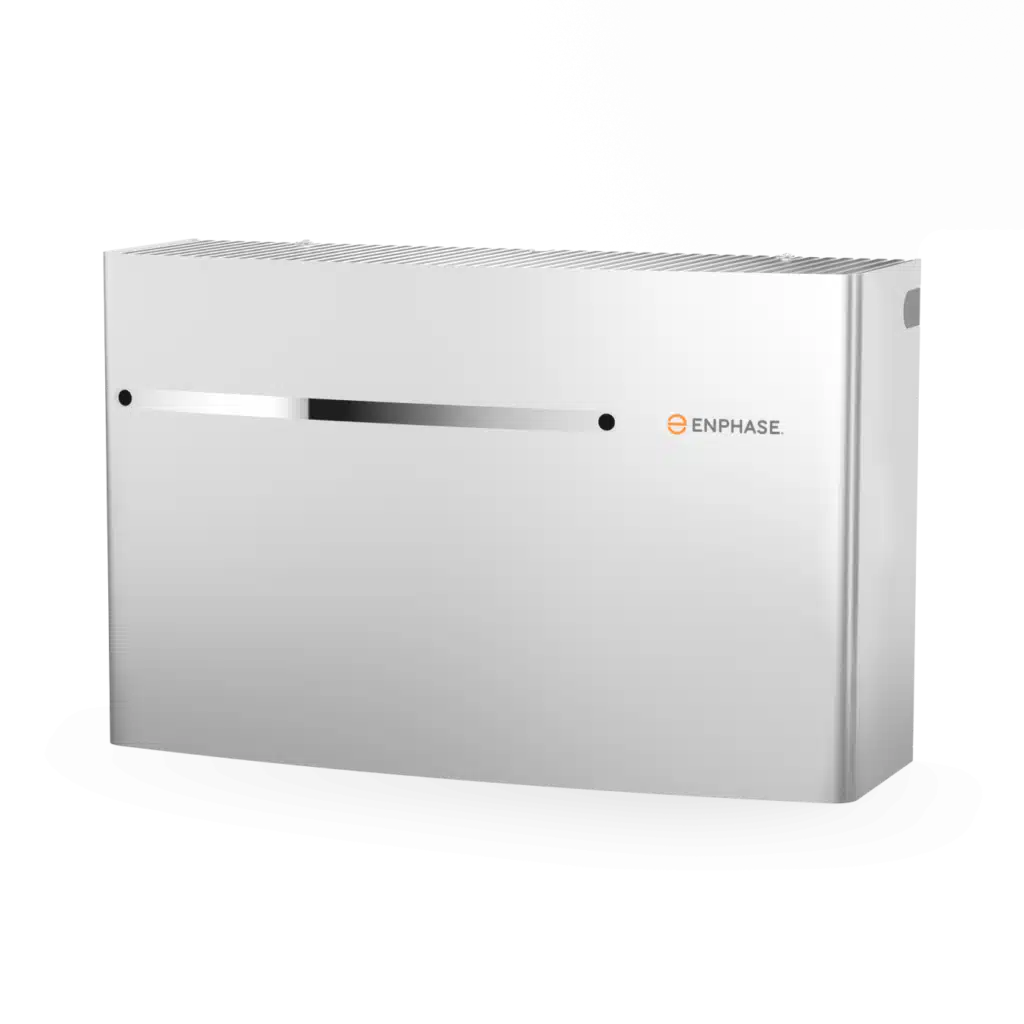
The Enphase IQ Battery integrates with solar panel systems, providing homeowners with a solution for storing surplus solar energy. This is advantageous in regions where utility policies have shifted, like those implementing time-of-use rates or evolving net metering practices. By capturing excess energy when solar generation exceeds household consumption, the battery reduces reliance on the grid, and it releases stored energy when solar output is insufficient, offering a reliable and efficient energy source.
Available in a range of sizes, including the Encharge 3/3T and Encharge 10/10T, the Enphase IQ Battery provides flexibility for different energy needs. Homeowners can opt for one or more units, depending on their storage requirements, and scale the system as needed. With a roundtrip efficiency of 89% and a 100% depth of discharge, the IQ Battery offers high performance, ensuring that a significant portion of the stored energy can be utilized for household consumption.
Made from lithium iron phosphate (LiFePO4), the IQ Battery is designed for safety, providing both power and peace of mind. Enphase supports this product with a robust 10-year warranty, ensuring that the battery will maintain at least 70% of its original capacity over the decade. Although the IQ Battery is currently available for pre-order, its estimated price ranges from $6,000 to $20,000, depending on the model selected, making it a considerable but potentially valuable investment in long-term energy independence.
Learn more in our Enphase Battery Review.
LG Energy Storage Systems
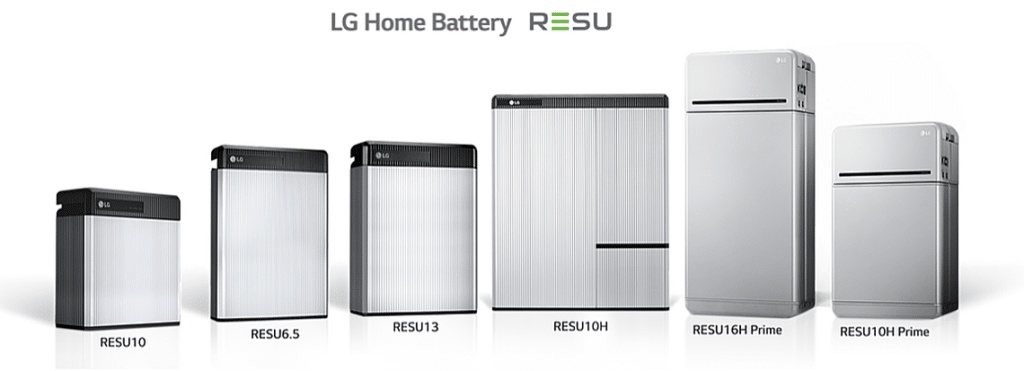
LG Chem, through its subsidiary LG Energy Solution, offers the RESU10H Prime and RESU16H Prime home batteries, both highly regarded for their reliability and cost-effectiveness. As a well-established leader in the lithium-ion battery sector, LG Chem brings years of experience and expertise to the table, having previously supplied batteries for electric vehicles such as the Chevy Bolt. Launched in 2021, the RESU10H and RESU16H Prime batteries are designed to address key consumer needs such as protection from grid outages, time-of-use load-shifting, and the ability to foster greater energy independence. These features have positioned the LG Chem batteries as strong competitors to the popular Tesla Powerwall.
The RESU10H and RESU16H Prime batteries, which are priced between $9,000 and $11,000 for the RESU10H and upwards of $11,000 for the larger RESU16H, are DC (direct current) batteries, meaning they generally offer better round-trip efficiency compared to AC batteries. This translates to less energy loss during the charge-discharge cycles, making them a more efficient option. This DC design also means that these batteries require specific inverters, which can make retrofitting them into existing solar systems more complicated. Despite this, they are effective at backing up essential household appliances during power outages.
While LG Chem’s batteries do not support the stacking of output like some other systems, they are still a reliable choice for homeowners seeking backup power. They use passive cooling, which is effective but not as sophisticated as the liquid cooling systems found in competitors like the Tesla Powerwall. Nonetheless, the RESU10H and RESU16H Prime batteries are durable and dependable. When you factor in the federal tax credits and potential state incentives, the LG Chem batteries present an attractive, competitively priced option, providing substantial savings compared to other market options, including the Tesla Powerwall.
Learn more in our LG Battery Review.
Generac Pwrcell
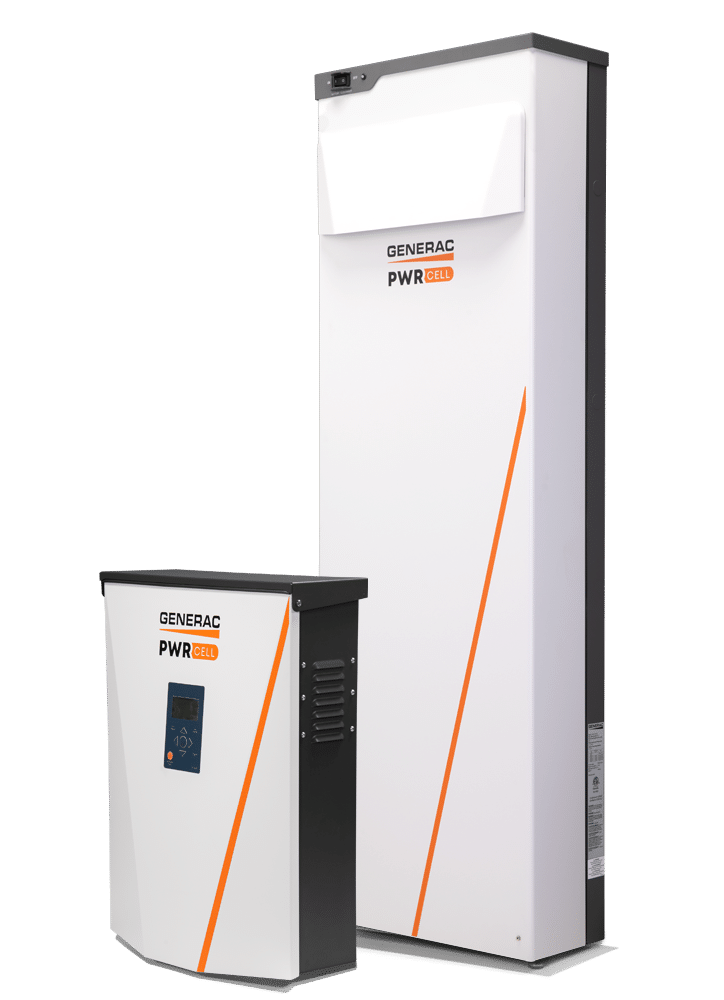
The Generac Pwrcell battery is particularly notable for its modularity, offering homeowners the flexibility to choose the ideal capacity to meet their energy needs. Rex Liu, Generac’s vice president of product management, highlighted this modular aspect, emphasizing that every home has unique energy demands. This adaptability makes the Pwrcell an appealing choice for those looking for a customizable energy storage solution, allowing for precise tailoring to individual power requirements.
The specifications of the Generac Pwrcell showcase its efficiency and adaptability. With the ability to store between 9 kWh and 18 kWh of energy, depending on how many battery modules are installed, the system provides significant flexibility for homeowners. It boasts a high round-trip efficiency of 96.5%, ensuring that less energy is lost during the charge-discharge cycle. The system’s capacity can also be expanded in 3 kWh increments, providing a scalable solution for those whose energy needs may grow over time. While these technical features are strong, potential customers should consider the mixed feedback on Generac’s customer service and product durability. Some users have raised concerns about the long-term reliability of the Pwrcell, particularly when it comes to warranty issues, which has affected the overall perception of the product.
Despite these concerns, the Pwrcell remains a solid option for energy storage. The system can be monitored and controlled through the well-regarded PWRview app, offering ease of use and real-time insights into energy management. The cost of the Generac Pwrcell ranges between $10,000 and $20,000, depending on the selected capacity, which is competitive in the energy storage market. While the Generac Pwrcell excels in modularity, efficiency, and scalability, prospective buyers should weigh these strengths against the company’s less-than-perfect customer service track record. It’s important to consult with certified installers and obtain multiple quotes to determine if the Pwrcell is the best fit for a home’s energy storage needs.
Learn more in our Generac Battery Review.
Panasonic EverVolt battery
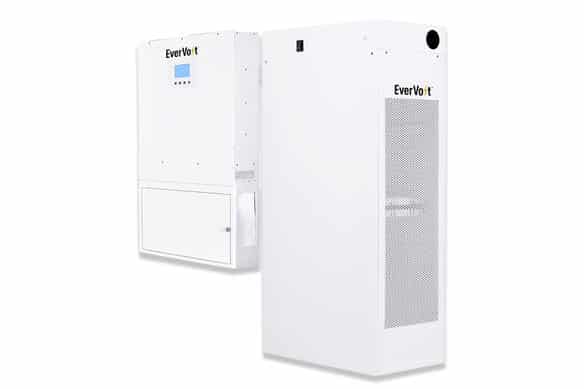
The Panasonic Evervolt Energy Storage System is essentially a massive rechargeable battery powered by the sun, designed to supply power to homes when required. Evervolt stands out from other energy storage systems, not only due to its sleek design but also its ability to integrate seamlessly with homes. There are four distinct versions of Evervolt, including both AC and DC coupled models, that can be modularly combined for more potent systems. Moreover, the Evervolt can work in conjunction with solar panel systems, forming a powerful duo that can save homeowners money.
In terms of performance, Evervolt has remarkable energy storage capabilities, similar to how a camel stores water for long treks. It’s not just about the sheer capacity to store power; Evervolt’s intelligence in power management sets it apart. While comparing Evervolt to other storage solutions, it’s essential to factor in its power and usable capacity. The larger EverVolt Plus model boasts a power capacity of 5.5 kW and usable capacity of 17.1 kWh. The term efficiency for Evervolt isn’t just about maximum storage but about optimizing every bit of stored energy.
Regarding the cost, the Panasonic EverVolt price, including installation, ranges from $15,000 to $20,000, with the Plus model priced at the higher end. Companies like IntegrateSun might offer installations at a reduced rate. If homeowners are considering coupling the EverVolt with a solar system, it’s important to note that a 5 kW solar system could range between $9,000 to $15,000, depending on location and equipment. Though the initial investment might seem steep, opting for a solar-plus-storage system might be financially beneficial in the long run, contingent on electric utility rate structures and individual preferences for solar batteries.
Fortress eVault Max
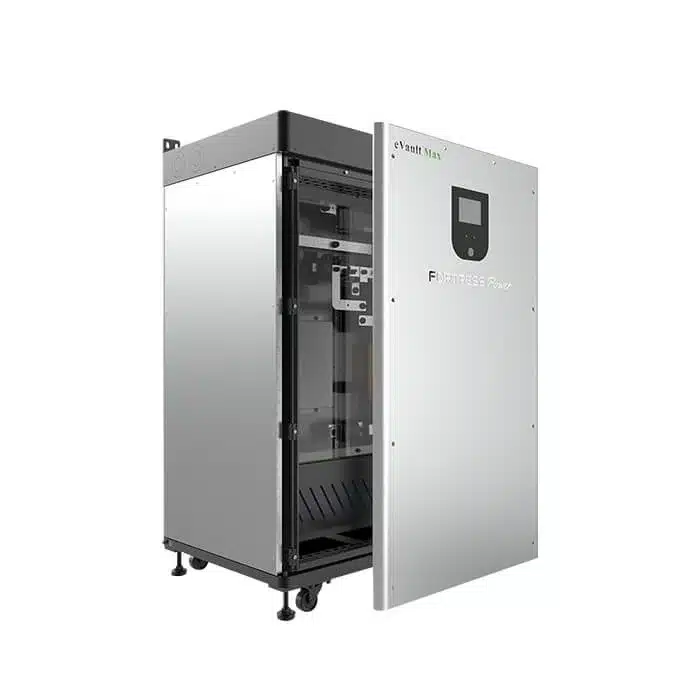
Fortress Power is a leading provider of lithium-ion storage solutions with a focus on affordability and user-friendliness. Their batteries are compact, suitable for most solar systems, and aim to reduce grid reliance while optimizing solar storage. The company offers four main models: eVault 18.5, eVault Max 18.5, eFlex 5.4, and LFP-5K-48V. The batteries come in three sizes: 18.5 kWh, 5.4 kWh, and 5.12 kWh, with varying power outputs and capacities. For instance, the eVault 18.5 has a maximum power of 9.6 kW and a usable capacity of 18.5 kWh. These units are modular, meaning multiple batteries can be connected to increase total storage capacity. For example, the eVault 18.5 can be stacked up to 12 units for a combined 222 kWh.
Performance metrics crucial to evaluating Fortress Power batteries include depth of discharge (DoD) and roundtrip efficiency. These batteries boast a DoD of up to 100%, signifying their efficient and safe lithium iron phosphate (LFP) chemistry. Their roundtrip efficiency is over 98%, implying minimal energy loss during charge and discharge cycles. In terms of functionality, Fortress Power batteries offer backup power, allowing homeowners to achieve grid independence during outages without needing an external transfer switch. The batteries use LFP chemistry, renowned for its safety and high power rating. The company provides a warranty covering 10 years or 6,000 to 8,000 cycles, ensuring the battery retains at least 70% of its charge capacity over this period.
In 2022, Fortress Power introduced the Guardian, a device enabling cloud connectivity for their batteries. With this device, users can monitor various battery metrics remotely and share data with Fortress for diagnostics. Costs for these batteries vary based on size and installation requirements, with a 5 kWh battery estimated at $6,500 and an 18.5 kWh unit at $24,000, including full system installation. Combining this with a solar system further increases the investment, but potential financial incentives in certain regions can offset these costs.
Not Sure Which Battery Is Right For You?
This is not an exhaustive list of all of the Tesla Powerwall alternatives, but they do represent some of the best. If you are struggling with building out your solar project and deciding on which solar batteries best suit your needs, contact our team of solar installation experts in North Carolina at 8MSolar. Now is a great time to go solar with Duke Energy’s PowerPair solar and battery incentive.
